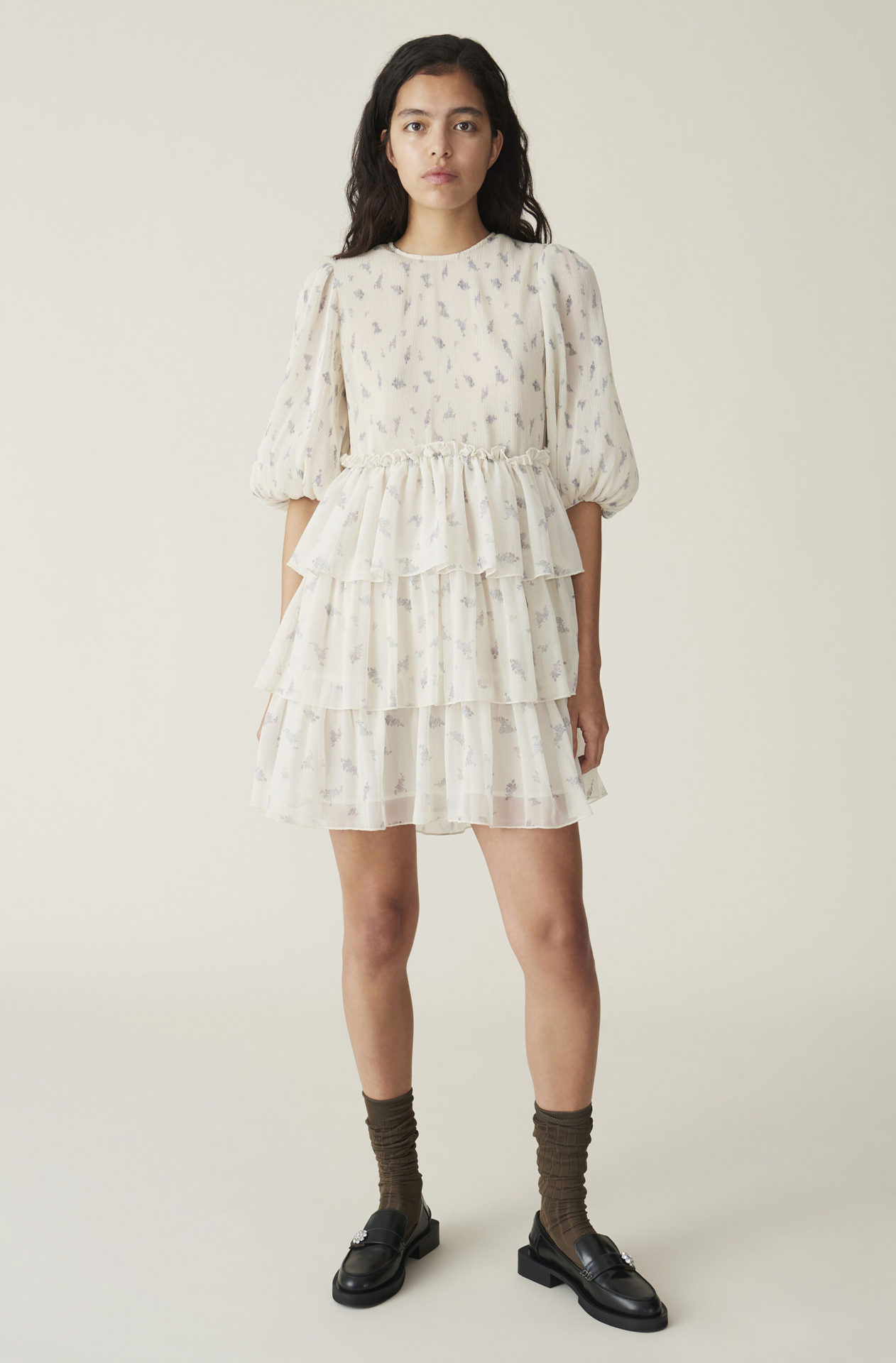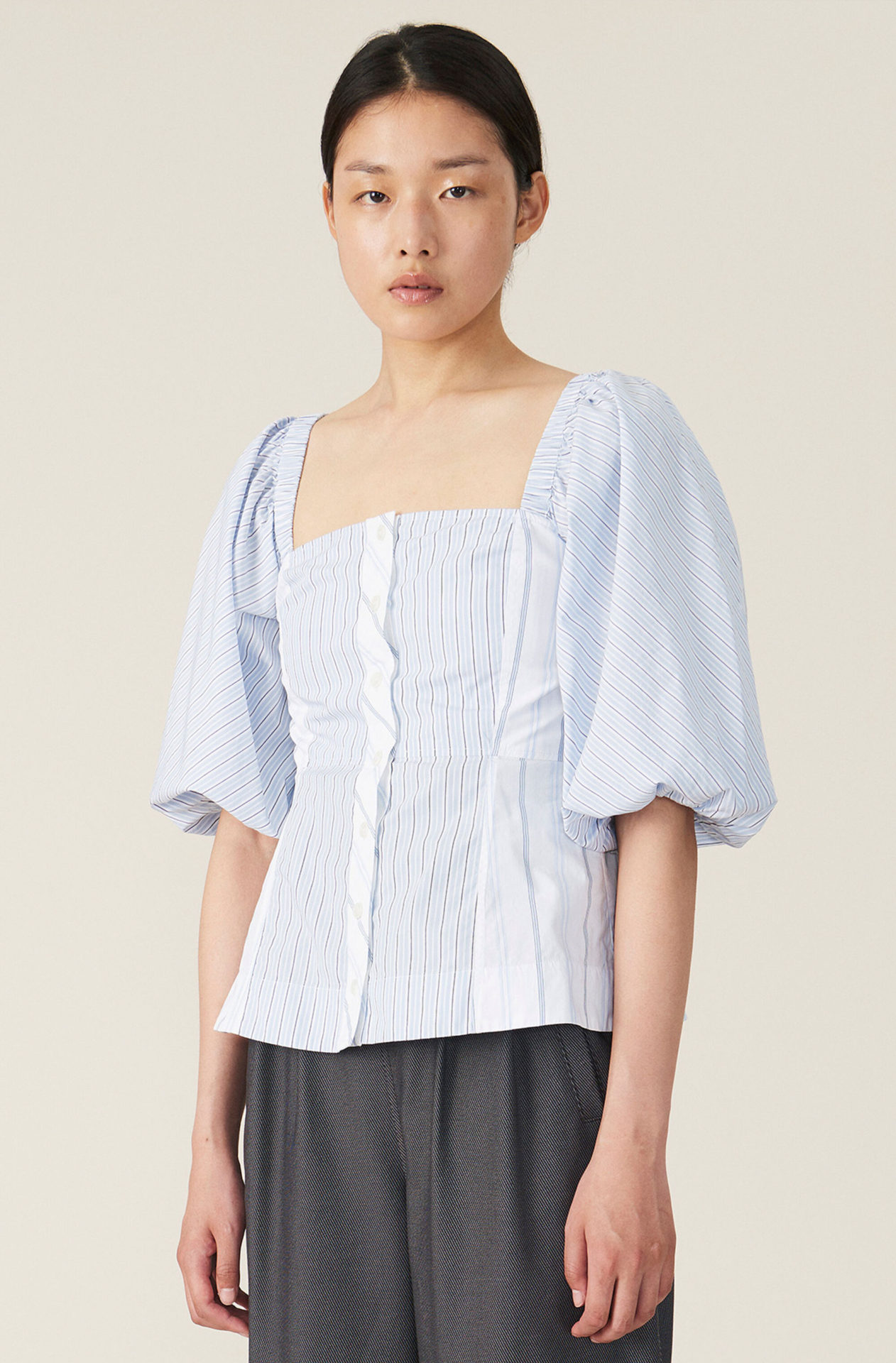
Scandinavian brand Ganni is known for producing luxury women’s fashion that is timeless and effortlessly cool.
Although sustainability has always been at the heart of the Copenhagen-based fashion house’s mission, it’s never been at the fore of their marketing. However, in the wake of the growing climate emergency that has garnered more attention than ever in the past year, Ganni is making a change.
To celebrate the 50th anniversary of Earth Day, Ganni publicly released a detailed sustainability report outlining 44 environmental goals they plan to achieve in the next three years.
To date, Ganni has worked with three United States Sustainable Development Goals (Gender Equality, Responsible Production and Consumption, and Climate Action). They have also committed to the targets set out in the UN Fashion Industry Charter for Climate Action, the New Plastics Economy Vision, and the Global Fashion Agenda. In 2019 alone, Ganni introduced over 30 responsible, sustainable initiatives, including a take-back program, a rental platform, and the use of more certified, organic, and recycled fabrics in their collections.
Despite all of these positive efforts, they feel this isn’t enough, which is what led the brand to publish a list of 44 goals they wish to accomplish by 2023. Their goals are divided into four categories: planet, product, people, and prosperity.
Examples of their goals for the planet include reducing CO2 emissions (specifically, they are pledging to cut emissions by 30 percent per kilogram of clothing), phasing out any suppliers who use coal-generated heat or energy, eliminating all unnecessary plastic packaging (which they plan to do by 2021), and removing as many polybags as possible, admittedly Ganni’s main plastic problem, but making sure that any which remain are recyclable, compostable, or reusable by next year.
When it comes to the production of Ganni’s clothing items and accessories, their goals all come back to circularity. These include expanding the Ganni Repeat Rental platform to the United States and the United Kingdom (currently it is only operational in Denmark), upcycling unsold stock and reselling it at SOEX in Germany, and adhering to the restricted substances list to ensure that any chemicals used comply with European REACH standards.
Further, goals within Ganni’s “people” category range from ensuring the fair treatment of models (that is why they signed the Danish Fashion Ethical Charter) to implementing new and improved diversity, inclusion, and gender equality hiring policies in their stores and offices.
Meanwhile under the prosperity heading, Ganni lists their goals that relate to the betterment of the fashion industry as a whole. For example, among their goals is the continuation of the Ganni Lab, where they test out different ways to tackle the global challenges faced by the fashion industry.
With these environmentally-friendly goals in mind, we can’t wait to see what Ganni produces in the years to come.
Down below are some of Ganni’s pieces made from responsible materials.
































Click here to read more about Ganni’s goals for sustainability and here to shop their peices.
This article contains affiliate links. Learn more.





